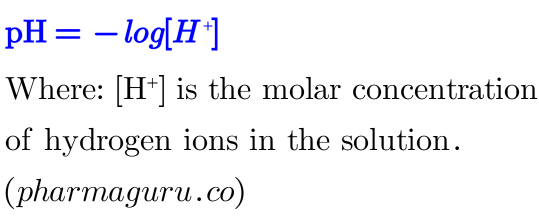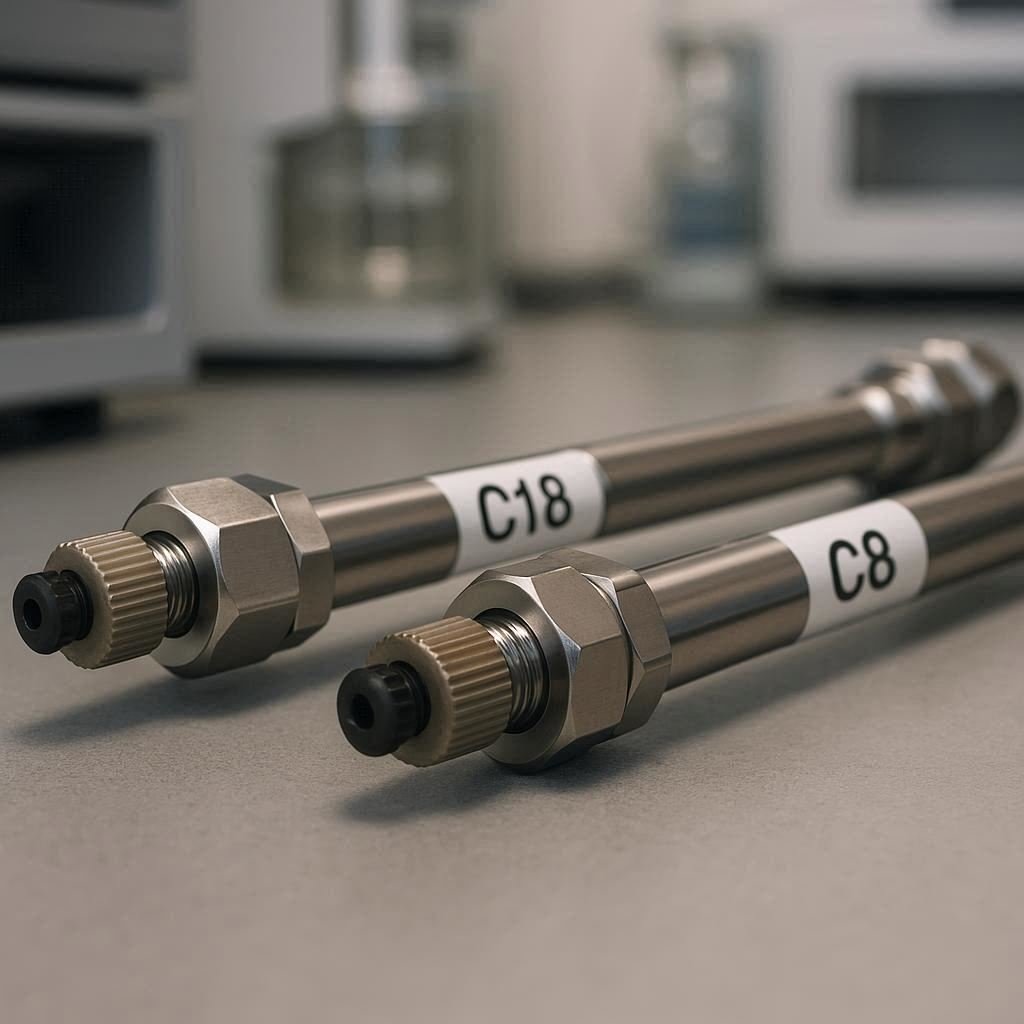pH plays a crucial role in the retention and separation of ionizable compounds in HPLC. By adjusting the mobile phase’s pH, analysts can control the ionisation state of analytes—whether acidic or basic—which directly influences their interaction with the stationary phase and ultimately their elution time. This allows precise control over the separation of compounds with […]
pH plays a crucial role in the retention and separation of ionizable compounds in HPLC. By adjusting the mobile phase’s pH, analysts can control the ionisation state of analytes—whether acidic or basic—which directly influences their interaction with the stationary phase and ultimately their elution time. This allows precise control over the separation of compounds with acidic or basic functional groups
High-Performance Liquid Chromatography (HPLC) is one of the most widely used techniques in analytical chemistry. It’s an indispensable tool for the separation, identification, and quantification of compounds in complex mixtures. The role of pH in HPLC analysis is crucial, influencing everything from the separation efficiency to the resolution and the behaviour of analytes.
In this blog, I will discuss why pH is so important in HPLC and how it impacts various aspects of the analysis.

Major Takeaway: FAQs
pH is important in HPLC because it affects the ionisation state of analytes, which influences their interaction with the stationary phase and their retention time. By controlling pH, analysts can optimise separation, resolution, and the stability of compounds, ensuring more accurate and reliable results
The pH range of HPLC columns typically falls between 2 and 8 for silica-based columns. However, specialised columns, such as those made with polymeric materials, can withstand pH ranges from 1 to 12. It’s important to stay within the manufacturer-recommended pH range to avoid damaging the column and ensure optimal performance.
pH affects column chromatography by influencing the ionization of analytes, which in turn alters their interaction with the stationary phase. Changes in pH can modify the polarity or charge of compounds, impacting their retention times, separation efficiency, and resolution. Extreme pH levels can also damage the column or affect the stability of the stationary phase.
pH is a measure of the acidity or alkalinity of a solution, based on the concentration of hydrogen ions (H⁺). It is defined as the negative logarithm of the hydrogen ion concentration:

A pH of 7 is neutral, values below 7 indicate acidity, and values above 7 indicate alkalinity.
1. pH and the Interaction Between Analytes and the Stationary Phase
The stationary phase in HPLC is usually made of silica particles that are either unmodified or bonded with various chemical groups. The pH of the mobile phase influences the charge state of analytes and the surface charge of the stationary phase. Here’s how pH plays a role:
2. pH and Retention Time
Retention time is a critical factor in HPLC because it helps to identify and quantify compounds. pH influences retention time in several ways:
3. pH and Selectivity
The selectivity of a separation refers to the ability to distinguish between different analytes in a sample. pH is a key factor in achieving the desired selectivity:
4. pH and Stability of Analytes
Many analytes are sensitive to changes in pH. In some cases, an analyte might degrade or undergo hydrolysis under certain pH conditions, which can compromise the integrity of the analysis. For example:
5. pH and Buffer Systems
To control the pH of the mobile phase in HPLC, buffer solutions are often used. Buffers are essential in maintaining a constant pH, especially during the elution of analytes. Some common buffers used in HPLC include:
Choosing the correct buffer is essential, as it should not only maintain a stable pH but also be compatible with the detection method (e.g., UV detection) and the nature of the analytes.
| Buffer Name | pKa | Effective pH Range | Volatility | LC-MS Compatibility | Notes |
|---|---|---|---|---|---|
| Formic Acid | 3.75 | 2.8 – 4.2 | High | ✅ Excellent | Enhances ionization; ideal for ESI; commonly used in positive mode. |
| Acetic Acid | 4.76 | 3.8 – 5.8 | High | ✅ Good | Mild ion suppression; widely used; better in low concentrations. |
| Ammonium Formate | 3.75 / 9.25 | 3.0 – 4.5, 8.2 – 10.2 | High | ✅ Excellent | Versatile; good for both positive and negative ion modes. |
| Ammonium Acetate | 4.8 / 9.25 | 4.0 – 5.8, 8.2 – 10.2 | High | ✅ Excellent | Common in LC-MS for neutral to basic pH; MS-friendly. |
| Trifluoroacetic Acid (TFA) | 0.23 | 1.0 – 2.0 | High | ⚠️ Limited | Strong ion pairing; suppresses ESI signal; improves peak shape. |
| Phosphate Buffer | 2.1, 7.2, 12.3 | 1.5 – 3.0, 6.0 – 8.0 | Low | ❌ Not Recommended | Non-volatile; causes salt deposits; MS signal suppression. |
| Tris (Tris-HCl) | 8.1 | 7.0 – 9.0 | Low | ❌ Not Recommended | Non-volatile; interferes with ionization and contaminates MS. |
| HEPES | 7.5 | 6.8 – 8.2 | Low | ❌ Not Recommended | Zwitterionic; not MS-compatible; forms adducts and suppresses signal. |
| MES | 6.1 | 5.5 – 6.7 | Low | ❌ Not Recommended | Sulfonic group; non-volatile; interferes with MS analysis. |
| MOPS | 7.2 | 6.5 – 7.9 | Low | ❌ Not Recommended | Similar to HEPES; non-volatile; not suitable for LC-MS. |
| Bicarbonate / CO₂ | 6.3 | 6.0 – 6.8 | Moderate | ⚠️ Conditional | Volatile; usable with online pH control; unstable in open systems. |
You May Like
To optimise HPLC results, consider the following best practices:
The pH of the mobile phase is one of the most significant factors in High-Performance Liquid Chromatography. From influencing the retention time and selectivity of analytes to ensuring the stability of compounds, pH plays an essential role in obtaining reliable and reproducible results. A careful understanding and optimisation of pH can help analysts achieve high-quality separations, improve resolution, and avoid degradation of sensitive analytes.
Next time you set up an HPLC analysis, don’t underestimate the power of pH—this seemingly small factor can dramatically influence your results, making all the difference in achieving optimal separation and accuracy
Related
Further reading



Quick Links